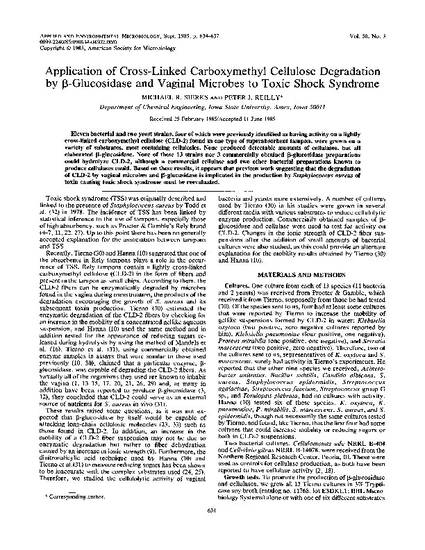
Eleven bacterial and two yeast strains, four of which were previously identified as having activity on a lightly cross-linked carboxymethyl cellulose (CLD-2) found in one type of superabsorbent tampon, were grown on a variety of substrates, most containing cellulosics. None produced detectable amounts of cellulases, but all elaborated beta-glucosidase. None of these 13 strains nor 3 commercially obtained beta-glucosidase preparations could hydrolyze CLD-2, although a commercial cellulase and two other bacterial preparations known to produce cellulases could. Based on these results, it appears that previous work suggesting that the degradation of CLD-2 by vaginal microbes and beta-glucosidase is implicated in the production by Staphylococcus aureus of toxin causing toxic shock syndrome must be reevaluated.
Available at: http://works.bepress.com/peter_reilly/12/

Published in Applied and Environmental Microbiology, 50, no. 3 (September 1985): 634–637.